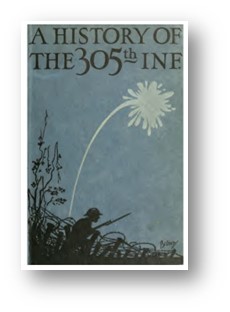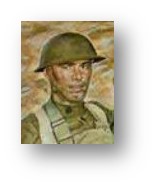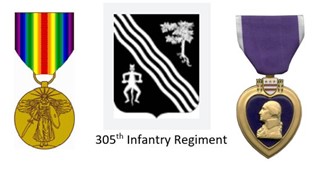Name: Murphy, John Oliver, 2nd LT, USA
Local address: born in Matawan and lived here as a child.
John, known as “Ollie”, was born in Matawan on February 18, 1890 to Enoch Lewis Murphy (1858-1917) and Margaret “Maggie” McGonegal (1862-1944). His father, a superintendent for the New York Telephone Co., was originally from Maryland and married Margaret on February 6, 1888 at St. Joseph Church in Keyport. Margaret came from an established Matawan family – her sister Mary was married to prominent Matawan businessman Patrick J. Devlin, and her mother, the former Margaret Delaney, was the proprietor of the Railroad Hotel in town.
The family resided at an unknown address in Matawan from 1888 until they moved to Mt. Vernon, NY, in Westchester County, around 1900. John was the oldest, and four other children were born in Matawan prior to the family’s move. John apparently spent many summers in Matawan and was well known in the community.
 John enlisted in the New York National Guard on June 26, 1916, which was shortly thereafter federalized as the US 7th Infantry Regiment and was deployed to the Mexican border to address the threat from Pancho Villa. Returning to New York in December, he entered officers’ training camp in Plattsburg, NY, and was commissioned a 2nd LT with Company “L” of the 305th Infantry Regiment attached to the 77th Division. On April 16, 1918, he shipped to Europe aboard the SS Cedric. The unit fought in the battles of Oise-Aisne, Champagne, Lorraine and was in the final push at Meuse-Argonne. On November 6, 1918 – five days before the war ended – John was killed leading his men in the Argonne Forest. The family received the following letters regarding John’s death:
John enlisted in the New York National Guard on June 26, 1916, which was shortly thereafter federalized as the US 7th Infantry Regiment and was deployed to the Mexican border to address the threat from Pancho Villa. Returning to New York in December, he entered officers’ training camp in Plattsburg, NY, and was commissioned a 2nd LT with Company “L” of the 305th Infantry Regiment attached to the 77th Division. On April 16, 1918, he shipped to Europe aboard the SS Cedric. The unit fought in the battles of Oise-Aisne, Champagne, Lorraine and was in the final push at Meuse-Argonne. On November 6, 1918 – five days before the war ended – John was killed leading his men in the Argonne Forest. The family received the following letters regarding John’s death:
“This letter is written with a haste I think you will overlook because of the desire to help you. The haste makes it impossible to look up all the details of your beloved brother’s death. You see, I was with the second battalion when at the front and hence often much separated from the third battalion. of which your brother was a member. However, I have much to say that Is probably worth more to you than the details of his death. First of all, he was one of my best friends. I was struck by his genuine worthiness and when I joined the regiment back about the middle of August, he was one of the first officers I met, and I didn’t seek him out. Word must have been carried to him that a Catholic priest was assigned to the regiment and he couldn’t have lost a moment for he came to me when surrounded by a great number of soldiers, and in such a beautiful way introduced himself and offered help and so on. He attracted me wonderfully, he was such a youthful, loving fellow, and his faith, oh, my dear, you know probably what it Is—I can never forget him on the first occasion of mass and communion in a great forest he was the only officer, right in the front row, and every time I had services he was present. I was shocked when I heard he was killed and somehow or other I got hold of an address—supposedly his father’s —J. Oliver Murphy, 68 William Street, New York City. I decided that his folks should know what I thought of him. Let me tell you of my last sight of your beloved one. It was my custom before an attack to go to all companies and give general absolution, which has the value of sacramental confession. I naturally went to him when giving to “L” company. He got all the Catholics of L and M together. I saw him in the large gathering with bowed head, going through the most supreme and beautiful ceremony of our church. He spoke with me shortly afterwards. His goodbye and manner and handshake was one of the consolations I have had—so full of resolution and hope, ready to meet any danger. He was killed in the attack which happened a short time after. You need never hesitate to write to me, for at any time I should love to write of him. He was, as I have said such a personal friend. I was deeply attached to him. I know he is among the Blessed—that’s my happiness as a friend and that I know means even more to you and your dear mother. Tell her that I know something of a mother’s faithful Christian heart; deep down in it there is a strength that will bear her through. To have a lovely son in heaven is that strength and God never made such mothers without standing by them. To you all I assure my remembrance in mass. God rest the beautiful soul of your son and brother, and my friend.
PETER LEO JOHNSON. Chaplain 305th Infantry.
“La Villeneuse, Dec. 29, 1918. My dear Mrs. Murphy: Captain Husband placed in my hands a letter from you. Inquiring about the circumstances of your brother’s death. Being in command of L company at the time, I am thoroughly acquainted with “Ollie” (as we all called him for short) and his good work at the front. It has been my good fortune to have “Ollie” as my lieutenant through most of our fighting at the front He always proved himself a reliable and bold soldier. His men loved and followed him with confidence and loyalty which he truly deserved. On October 3rd “Ollie” went through one of the “hottest” fights the war has seen and came out untouched. From that day on we both believed ourselves “immune.” On October 17 we began a ten days rest period during which “Ollie” went on leave to Paris and returned full of renewed energy for the coming offensive which we all knew was at hand. The day came. On October 21 we moved up to St. Juvin, in the Argonne woods. It was from that point the attack was scheduled to start. L and M companies led the attack at 5:30 a. m. The Hun held out for four hours and then began his retreat We followed until we reached a place east of Champaigneule, where the Hun held a ravine directly to our front. “Ollie” was In charge of the first platoon on the right. At four o’clock on November 1st, Lieutenant Murphy moved to the right of the ravine to get an enfilade fire, and during the advance he was hit in the head with a machine gun bullet. Death followed without him ever regaining consciousness. – I buried “Ollie” at 11 o’clock on the morning of November 2nd. His grave is six hundred yards east of the village of Champlgneulle. It is marked by a wooden cross with his name on the cross to which is nailed his tag. We left our brave lieutenant in peace, full rest as we moved on in pursuit of the hated foe. His work was done, another could not do a better work as a soldier of courage and honor. It has been and Is my intention to seek out “Ollle’s” home on our return that you may receive at first hand the story of his work. May I claim your friendship as a friend of Ollie’s?
Sincerely,
FRANK NOWAK”
John’s body was transferred from the grave in the Ardennes to the American Cemetery in Romagne-sous-Montfaucon in Meuse, and again disinterred on July 8, 1921 to be returned to the United States aboard the USAT Wheaton on August 8, 1921. Undertaker Arrowsmith received the body in Matawan, and a quiet ceremony was had at St. Joseph Church in Keyport on August 28, 1921, when he was buried near other family members in the church’s cemetery. There were no military honors at the funeral.


NO COMMENTS